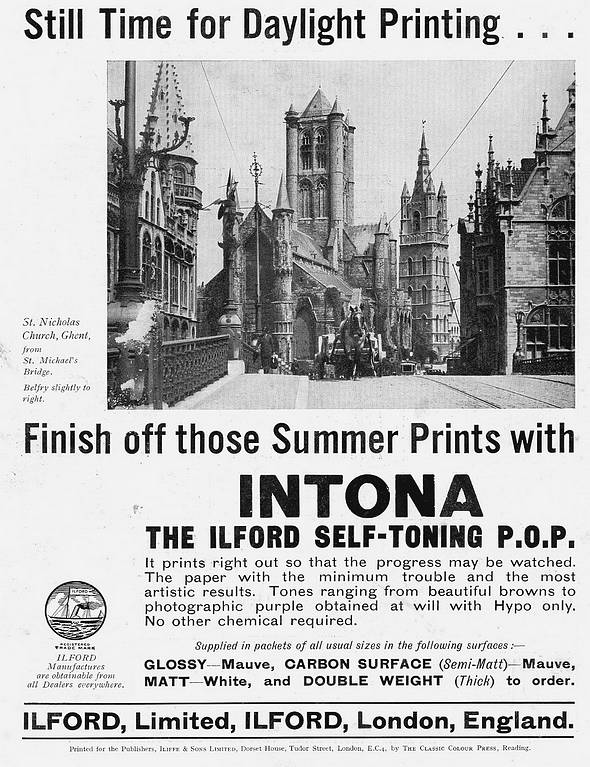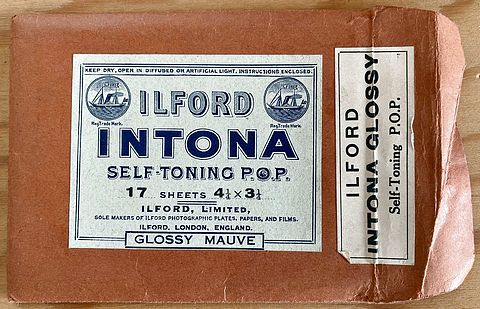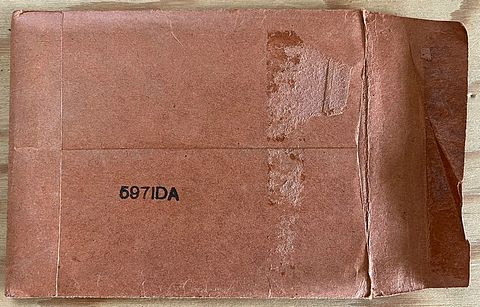| ILFORD Intona P.O.P advert 1930 |
|
|
|
|
Ilford's advert shown here (taken from the back page of Amateur Photographer magazine for 10th September 1930) suggests "Still Time for Daylight Printing - Finish off those Summer Prints with INTONA, the Ilford Self-Toning P.O.P (printing out paper). It prints right out so that progress may be watched. The paper with the minimum trouble and the most artistic results. Tones ranging from beautiful browns to photographic purple, obtained at will with Hypo (fixer) only. No other chemical required." P.O.P paper was used in contact printing frames to produce positive images merely by the action of light through the negative; it required no developer. When the image looked to have reached the desired density, it just required to be fixed to be made permanent. P.O.P was the fore-runner to 'gaslight' paper that later became known as 'contact' paper. These latter papers required development as well as fixing but were much 'faster' than P.O.P so needed to be exposed to strong light for only a few seconds before development. P.O.P was very slow and required an exposure of several minutes to daylight - hence Ilford suggesting, in their September advert, that there was still time for Daylight Printing. To see an Intona packet that once held 17 sheets of quarter plate sized paper, now (August 2024) owned by Stuart Allen, scroll down below the advert. |
|
 |
|
|
According to the chronological 'List of the Company's Products' that appears in Appendix 4 of the book 'Silver by the Ton; A History of Ilford Ltd, 1879-1979', Intona P.O.P was first sold in 1910. Michael Talbert's research, together with the above chronology, reveals that Ilford 'Enitone' paper, as commercialised in 1938, seemingly replaced 'Itona'. In 1938 there were two types of P.O.P, viz: Seltona, which was made with a collodion emulsion, and Enitone, which was a gelatine emulsion. Enitone gave a wide range of tones from warm to cold according to the strength of the fixing bath or time of fixing. For best results on either paper, negatives needed to have more contrast than was usually needed for making a print on ordinary P.O.P. or on contact paper, grade 2 (normal). The Intona packet shown below
is by courtesy of Stuart Allen. |
|
 |
 |
|
|
|
|
|
|